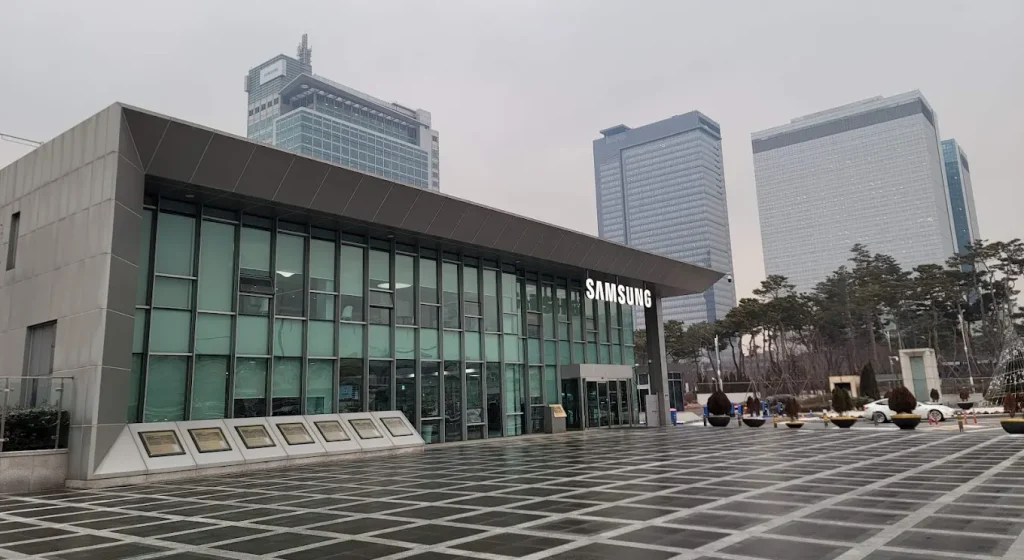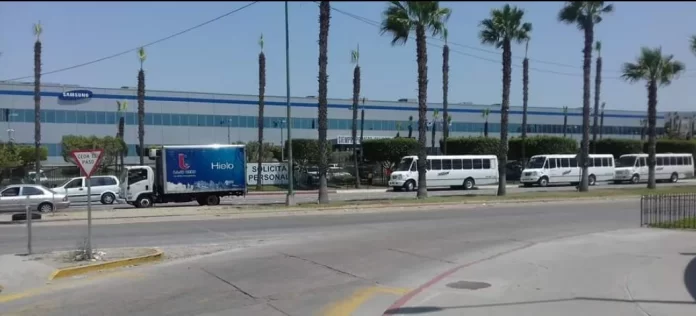The evolution of electronics manufacturing in the 21st century, particularly in the television industry, signals a significant shift from traditional closed-loop manufacturing to a more open, globalized approach. Despite lacking a complete production cycle, industry giants such as South Korean companies Samsung and LG have been at the forefront of this transformation, leading sales and innovation.
Samsung, in particular, has adapted to this global manufacturing trend. Their products are now labeled with different countries of origin, such as China or Mexico, but it is impossible to see a TV made in Korea. This strategy is driven by several factors, primarily the desire of competitors to dominate the market. Minimizing costs, finding cheaper labor, and automating production are the most critical aspects of this approach. While quality is still essential, it has often become secondary to cost in this context.
In addition, there has been a marked shift in the localization of global manufacturing, with China falling into the middle-income trap, giving way to countries such as Vietnam, Malaysia, and Cambodia in terms of the attractiveness of factory location. Tax incentives also play a role: for example, favorable tax policies between the US and Mexico encourage companies to manufacture in Mexico for the US market.
How Samsung TVs are manufactured
The manufacturing process for Samsung TVs begins at least a year before the product hits store shelves. This process involves several steps:
- Market Analysis: Samsung marketers assess the market to forecast demand for different types of TVs, segmented by features and screen size.
- Research and Development: New operating systems and TV models are developed in this phase. Decisions are made on component suppliers, including screens, housings, electronic parts, and packaging materials.
- Supply Chain Planning: Final assembly and packaging locations are determined, which requires careful planning of the entire supply chain.
This is a complex, multi-faceted process that is influenced by many factors. The real challenge for companies like Samsung is to manage these complexities effectively to ensure a successful and profitable production and sales cycle.
Production of components for Samsung TV sets
The production of Samsung TV sets involves a complex supply chain for various components, including screens, electronics, plastic, speakers, and software.
- Screens: The centerpiece of any TV is the display. Historically, Samsung Display, a division of Samsung, has produced about half of the displays for its TVs. However, in 2020, due to global processes and the growing popularity of OLED screens, this entailed the sale of the Chinese factory producing LED and QLED displays to TCL CSoT (China Star Optoelectronics Technology). The reason for this decision was the oversaturation of the market with LED screens and limited prospects, especially in light of growing competition. Samsung refocused on the development of OLED panels for mobile devices and large QD-OLED TV screens. For TV displays, QD-OLED screens are manufactured by Samsung in two production facilities in Korea, located in Asan and Gwangju. Meanwhile, LED (QLED) displays are now sourced from other suppliers, including TCL, BOE, AU Optronics, Innolux, and LG.
- Electronics: The electronic components essential for TVs are mainly produced in China and Vietnam. This international production strategy enables Samsung to leverage cost efficiencies and scale.
- Plastics: The plastic used for TV housings are sourced from various companies, predominantly in China. This global sourcing is likely a strategic choice to optimize costs and supply chain efficiency.
- Software: Samsung TVs operate on the Tizen OS, an operating system developed and supported by Samsung. This in-house software development allows Samsung to closely integrate its software with the hardware, providing a seamless experience.
In summary, Samsung’s approach to TV production exemplifies a globalized manufacturing process, with various components sourced and assembled across multiple countries. This strategy allows Samsung to stay competitive in cost, innovation, and supply chain flexibility.
Where are Samsung TVs manufactured
The final stage in Samsung TV production is assembly, executed in specialized factories. In these facilities, the final assembly of the TV set occurs, involving the integration of various components—screens, circuit boards, speakers—into the housing. The assembled TV undergoes inspection, is packaged, and then dispatched to warehouses and eventually to distributors or directly to the market.
These assembly factories are strategically located closer to consumer markets. This geographical positioning serves dual purposes: minimizing taxes and reducing logistics costs. The proximity to consumer markets allows for a more efficient and cost-effective distribution process.
Once assembled, the TV sets are transported through a logistical chain to their designated countries. It’s important to note that TVs manufactured in different countries may have different technical specifications. This variation is due to differing digital broadcasting standards, necessitating distinct digital tuners for different regions. Moreover, the compatibility with various streaming services can vary based on the country, influenced by commercial factors such as regional royalties for film viewership. This is why Samsung TV model numbers often include regional and country identifiers, offering insights into each model’s specific features and standards, as detailed in resources like the “Samsung TV model number explanation.”
This global network of assembly factories reflects Samsung’s approach to optimizing production and distribution efficiency, tailoring products to meet regional standards and preferences, and strategically managing costs.
Samsung’s global production of TVs includes an extensive network of factories. These plants are located in a variety of countries, each chosen for strategic considerations ranging from market access to cost of production. Among the countries where Samsung’s TV manufacturing plants are located are Slovenia, Hungary, Romania, Korea, Russia, China, Mexico, Malaysia, Vietnam, Brazil, Bangladesh, Nepal, Egypt, South Africa and India.
This aspect will be discussed in more detail in the next section.
Samsung TVs plant in Korea

Historically manufactured in South Korea, namely at the Suwon factory, Samsung TVs stopped rolling off the assembly line in 2018. In 2018, this factory underwent a remodeling and redesign. The focus at the Suwon plant was not on the mass production of TVs but on the more specialized production of test equipment, mainly for testing prototypes. As a result of this process, you won’t find a TV set that says made in Korea. The main reason for the discontinuation of TV production in Korea is the rising cost of human labor and logistics, with Vietnam chosen as the new production base.
Samsung TV production in China
Samsung’s journey in TV production within China commenced in 1993 with the establishment of a factory in Tianjin. This facility began Samsung’s foray into the Chinese market, producing various TV models over the years. However, the production volume at this plant gradually declined, and by 2021, it ceased entirely. At the time of its closure, the factory employed approximately 300 people.
The declining popularity of Samsung TVs in the Chinese market influenced the decision to halt TV production in China. This decline wasn’t necessarily a reflection of Samsung’s performance but was mainly due to the competitive landscape. The Chinese government’s subsidies to domestic manufacturers made their products more affordable, particularly in the budget segment, thereby affecting Samsung’s market share. As a result, Samsung’s annual TV sales in China dwindled to about 300,000 to 400,000 units.
In a strategic move to reinvigorate its presence in the Chinese market, Samsung introduced the China-exclusive Z series of TVs in 2023. This series is tailored specifically for the Chinese market, focusing on enhancing the TV’s functionality as a gaming monitor. Despite these efforts, the era of Samsung manufacturing TVs in China has concluded, marking a significant shift in the company’s global manufacturing strategy.
Samsung TV production in Mexico
The Samsung TV manufacturing facility in Tijuana, Mexico, is critical in serving the North and South American markets. This plant can produce approximately 18 million devices annually, highlighting its significance in Samsung’s global production network.
Around 2017-2018, there were speculations about the potential relocation of this factory, primarily due to concerns over possible tax increases by the United States. These concerns were based on the broader economic and trade policies affecting imports. However, since the Tijuana plant’s primary function is to cater to the entire American continent and not solely the United States, these rumors about its closure have yet to materialize into action. Notably, the U.S. imposed taxes on devices imported from South Korea, which did not affect the operations of the Mexican plant.
As of now, the Tijuana factory continues its operations uninterrupted. Furthermore, Samsung is demonstrably bolstering its investment in assembly plants within Mexico. This strategic decision underlines Samsung’s commitment to the American markets and its approach to leveraging regional manufacturing advantages, such as proximity to key markets and favorable trade conditions.
Samsung TV production in Hungary
Samsung’s TV production activities in Hungary are pivotal to their European manufacturing operations. Since establishing its presence in the early 1990s, Samsung recognized Hungary as a strategically advantageous location for serving the European market. The country’s favorable economic conditions, skilled workforce, and central geographical position in Europe made it an ideal choice for Samsung’s manufacturing base.
Throughout the years, Samsung has continued to invest in its Hungarian facilities, capitalizing on these advantages. Samsung’s commitment to maintaining and enhancing its operations in Hungary underscores the importance of this location in Samsung’s overall European strategy. Today, televisions assembled in Hungary are distributed across various European countries.
Samsung TV production in Slovakia
Samsung’s operations in Slovakia have undergone notable changes over the years. The company initially operated two plants in the country, one in Voderady and another in Galanta. The Voderady facility was primarily focused on producing components that were then supplied to the Galanta plant for final assembly. However, a strategic consolidation occurred when the Voderady plant was closed, and its operations were merged with the Galanta facility.
Approximately five years ago, Samsung contemplated closing its Slovakian plant and shifting its production capacity to Hungary. This consideration was a part of Samsung’s ongoing assessment of its global manufacturing strategy to optimize efficiency and cost-effectiveness. However, this potential move has yet to materialize. Several factors influenced this decision, including tax incentives offered by the Slovak government, which made continuing operations in Slovakia more favorable.
Additionally, Hungary’s political and economic context, particularly its complex relationship with the European Union, may have played a role in Samsung’s decision to maintain its presence in Slovakia. In the context of geopolitical and economic stability, Slovakia presented a lower-risk option and a diversification strategy for Samsung’s European operations. The decision to retain the Slovakian plant highlights Samsung’s adaptive approach to global manufacturing, considering a range of factors from economic incentives to geopolitical stability.
Samsung TV production in Romania
Samsung’s manufacturing presence in Romania has evolved, reflecting changes in market demand and strategic production decisions. Between 2012 and 2015, Romania was a site for assembling monitors with tuners and specific TV models. This period coincided with a peak in demand for new TVs, prompting Samsung to utilize Romanian facilities for these productions.
However, as the market dynamics and Samsung’s global manufacturing strategy evolved, the focus of the Romanian facilities shifted. Presently, Romania is primarily involved in the production of components for Samsung.
Samsung TV production in Russia
Samsung’s television assembly plant in the Kaluga region, specifically in Koryakovo, Russia, was an integral part of its strategy to serve the Russian market and the Commonwealth of Independent States (CIS), along with some exports to Eastern Europe. With an estimated production capacity of 7-8 million televisions per year, this facility played a significant role in meeting the regional demand for TV sets.
However, in 2022, operations at this plant in the Kaluga region were halted. This shutdown was part of Samsung’s compliance with international sanctions against Russia. The cessation of TV production and supply to the Russian market responded to the broader geopolitical situation and the imposition of sanctions by various countries and international bodies.
Samsung TV production in India
Samsung’s path to manufacturing TVs in India has undergone significant changes, primarily influenced by the country’s regulatory environment. Samsung originally had a TV manufacturing plant in Chennai, India. However, in 2018, the company stopped manufacturing TVs in the country. This decision directly responded to the Indian government’s imposing taxes on imported components used in the assembly of TVs. These additional costs made local production uneconomical for Samsung.
Samsung subsequently began supplying TVs to the Indian market from its factories in Vietnam, which was in line with the company’s strategy to optimize costs and maintain its market presence in the face of the new tax regime.
In 2020, Samsung resumed TV production in India, but this time through a partnership with Dixon Technologies, an Indian electronics manufacturing services company. The resumption of production was facilitated by a change in policy by the Indian government, which eliminated duties on some critical components of TVs, such as screens. Removing these duties made local manufacturing economically viable, allowing Samsung to resume TV production in India.
Samsung TV production in Vietnam
Vietnam has emerged as a pivotal hub in Samsung’s global manufacturing network, primarily due to the country’s cost-effective labor and the supportive policies of the Vietnamese government. Samsung’s significant presence in Vietnam is a strategic business decision and a substantial contributor to the local economy, creating approximately 60,000 jobs.
Samsung’s operations in Vietnam encompass a comprehensive setup, including one research center and eight factories in Thai Nguyen province. This extensive infrastructure signifies Samsung’s commitment to leveraging Vietnam as a key production base. The research center underscores the company’s focus on regional innovation and development, while the manufacturing facilities are integral to its global supply chain.
The televisions produced in these Vietnamese facilities cater to diverse markets. They are distributed across various regions, including Asia, China, Korea, Australia, and Africa.
Samsung TV production in Malaysia
Initially, Malaysia was one of the manufacturing locations for Samsung TVs, especially CRT (cathode ray tube) TVs. This production facility operated until 2012. However, in 2012, Samsung strategically decided to cease production of CRT TVs globally. This decision aligned with the industry trend as the market shifted to more advanced and energy-efficient display technologies such as LCD, LED, and OLED screens.
Accordingly, Samsung’s TV production in Malaysia ceased in 2016. This closure was part of an ongoing reorganization of Samsung.
Samsung TV production in Brazil
The production of Samsung TVs in Brazil is essential to the company’s strategy in Latin America. The company has recognized the potential of the Brazilian market, both in terms of consumer demand and as a strategic manufacturing location to serve the entire Latin American region.
Samsung has manufacturing facilities in Brazil that produce a variety of TV models. These facilities serve the domestic Brazilian market and supply TVs to other Latin American countries.
Samsung TV production in Egypt
Samsung began manufacturing TVs in Egypt in 2013, an essential part of its strategy in the Middle East and Africa. Egypt’s choice was based on several critical factors, including the country’s strategic geographical location, which facilitates access to markets in these regions, and economic conditions favorable for production.
Samsung’s Egyptian plant assembles various TV models for domestic consumption and export to other countries in the region, with more than half of the TVs produced being exported.
Samsung TV production in Nepal
In collaboration with Him Electronics of Golchha Group, Samsung has started assembling LED TVs at its newly established factory in Nawalparasi, Nepal. The assembly plant has a capacity of 300,000 units per year, possibly increasing production depending on market demand.
Nepal imported around 120,000 TVs in 2022, and Samsung plans to dominate the country.
Samsung TV production in Bangladesh
Since 2017, Samsung has been involved in a joint venture with Fair Electronics to manufacture its TVs in Bangladesh. This collaboration is indicative of Samsung’s strategy to localize production to meet the needs of specific regional markets. The majority of TVs manufactured in Bangladesh – about 90% – are sold in the domestic market.
Samsung TV production in South Africa
In 2017, Samsung opened a TV and monitor assembly plant in South Africa, marking a significant expansion of its manufacturing presence in Africa. The plant was part of Samsung’s strategy to expand its presence in the African market, capitalizing on the growing demand for consumer electronics in the region.
However, the plant faced severe problems after riots in South Africa in 2021. During these riots, some of the factory’s products were reportedly looted, making it very difficult to operate. In response to this situation, Samsung introduced a lockdown on TVs stolen from the warehouses—the move aimed to control its product distribution and protect itself from further losses.
The operational status of Samsung’s plant in South Africa is now unknown. The impact of the unrest may have required a reassessment of security measures, production capacity and the overall viability of the plant. In such situations, companies often carefully evaluate their operations, taking into account factors such as local market conditions, security risks and the broader economic environment.







Dear Supplier
My name is Patrick Martins from Cross Family Group Holdings Ltd, a company from United kingdom and we are looking for a reliable supplier that has the potential of supplying us with SMART LED TV.
Confirm on the prices CIF Mombasa port Kenya, where some orders will have to be delivered.
Our payment terms are 100% O/A 60 days after B/L Date covered by your export credit insurance company.
Thank you ,
Best regards.